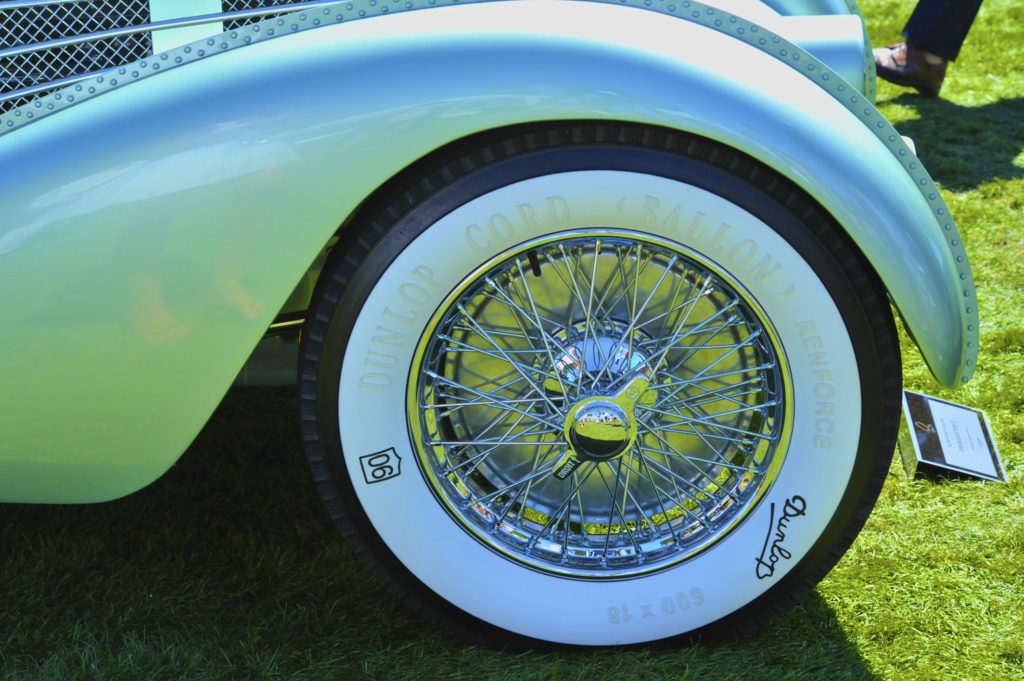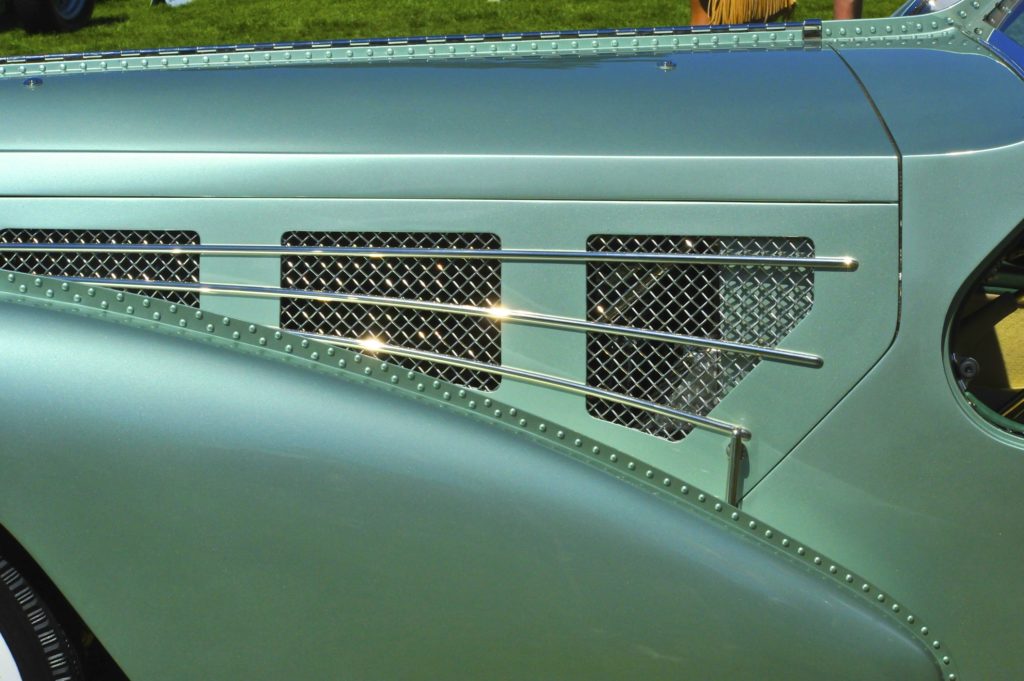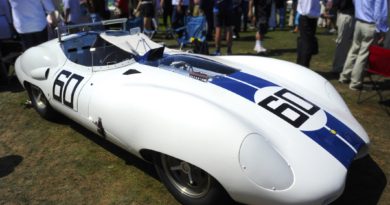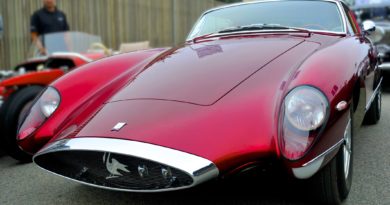Is a Re-creation an Original?
What’s so special about this car? Well, just look at it! The color, the swoopiness, that spine running from nose to tail; suicide doors, hard to get in and out of and difficult to drive besides. On top of that it’s a Bugatti with a magnesium body – super light and super hard to fabricate. Lastly, it took 7 years to build, is only partly original, yet Bugatti aficionados love it anyway.
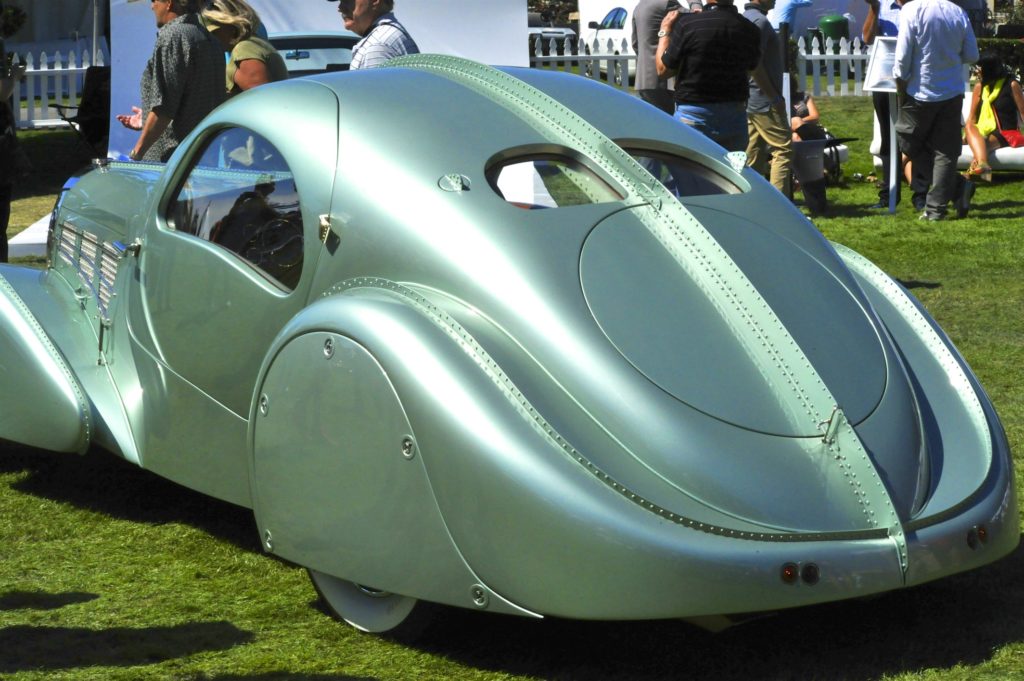
The fourth Type 57 chassis produced and earliest known to exist formed the basis for this re-creation of the magnificent Aerolithe prototype. Originally built by Jean Bugatti for the 1936 Paris Auto Show, the real one was dismantled and vanished only 10 months afterward. This car was commissioned by Chris Ohrstrom of Virginia as an inspiration of David Grainger’s Guild of Automotive Restorers in Ontario, Canada.
The magnesium body was made as exactly as possible from scratch, at least as much as the eleven remaining photographs of the original would allow. The Guild went so far as to use only fabrication and welding techniques that were available in the ‘30s. There are hundreds of flush rivets under the paint. Each visible rivet is positioned as close to correct as possible. They stopped counting the time it took to build the body after reaching 7,000 manhours! Magnesium vaporizes (read explodes!) at 1,100º F., but must be heated to 800º F. to hand work. To make matters worse, magnesium can only be bent on one axis at a time. Can you imagine?! Even the tires had to be made from scratch! The color was taken from a painting of the car by a Bugatti engineer named Reister and is also thought to be correct. The car is powered by a Bugatti 3.3L, dohc straight 8 engine.
Ettore Bugatti was an engineer in an artist’s body; his father created Art Nouveau furniture and his brother was a sculptor. All that art background showed in the beauty, craftsmanship and appearance-driven engineering of all his cars. The Aerolithe became the basis for the more refined Bugatti Atlantic, of which four were built and three have survived. Similarities can also be found in the 40 Atalantes that followed.
The car was finished just a few months before it was shown here at the 2013 Quail, A Motorsport Gathering. A few tidbits: Magnesium, called Electron in the ‘30s, is expensive; $3,500 per 4X8 sheet and it took about 24 sheets to build this car; Aerolithe means ‘meteor’ in French and that’s pretty much what it looks like; it’s sometimes credited with starting the ‘teardrop’ art deco design ethos of coachbuilders in the mid-late 1930s; Owner Chris Ohrstrom happens to be head of the World Monuments Fund, a non-profit preservation organization.
More on this car with David Grainger at: https://www.youtube.com/watch?v=uqRRVcpy8Qw, and with David and Jay Leno at: https://www.youtube.com/watch?v=fSQG7GHTHDE


